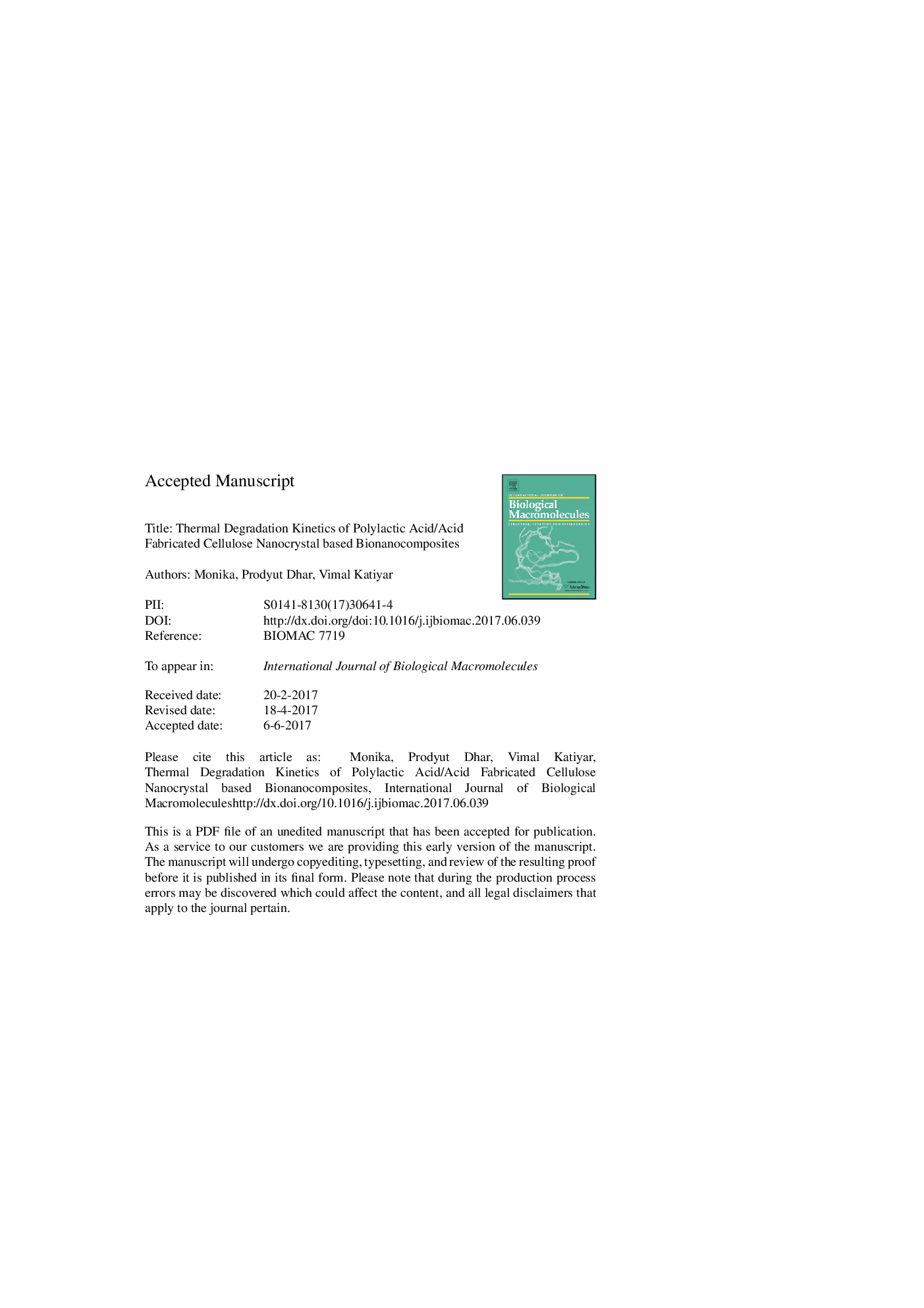| Article ID | Journal | Published Year | Pages | File Type |
|---|---|---|---|---|
| 5511710 | International Journal of Biological Macromolecules | 2017 | 32 Pages |
Abstract
Cellulose nanocrystals (CNC) are fabricated from filter paper (as cellulosic source) by acid hydrolysis using different acids such as sulphuric (H2SO4), phosphoric (H3PO4), hydrochloric (HCl) and nitric (HNO3) acid. The resulting acid derived CNC are melt mixed with Polylactic acid (PLA) using extruder at 180 °C. Thermogravimetric (TGA) result shows that increase in 10% and 50% weight loss (T10, T50) temperature for PLA-CNC film fabricated with HNO3, H3PO4 and HCl derived CNC have improved thermal stability in comparison to H2SO4-CNC. Nonisothermal kinetic studies are carried out with modified-Coats-Redfern (C-R), Ozawa-Flynn-Wall (OFW) and Kissinger method to predict the kinetic and thermodynamic parameters. Subsequently prediction of these parameter leads to the proposal of thermal induced degradation mechanism of nanocomposites using Criado method. The distribution of Ea calculated from OFW model are (PLA-H3PO4-CNC: 125-139 kJmolâ1), (PLA-HNO3-CNC: 126-145 kJmolâ1), (PLA-H2SO4-CNC: 102-123 kJmolâ1) and (PLA-HCl-CNC: 140-182 kJmolâ1). This difference among Ea for the decomposition of PLA-CNC bionanocomposite is probably due to various acids used in this study. The Ea calculated by these two methods are found in consonance with that observed from Kissinger method. Further, hyphenated TG-Fourier transform infrared spectroscopy (FTIR) result shows that gaseous products such as CO2, CO, lactide, aldehydes and other compounds are given off during the thermal degradation of PLA-CNC nanocomposite.
Related Topics
Life Sciences
Biochemistry, Genetics and Molecular Biology
Biochemistry
Authors
Monika Monika, Prodyut Dhar, Vimal Katiyar,
